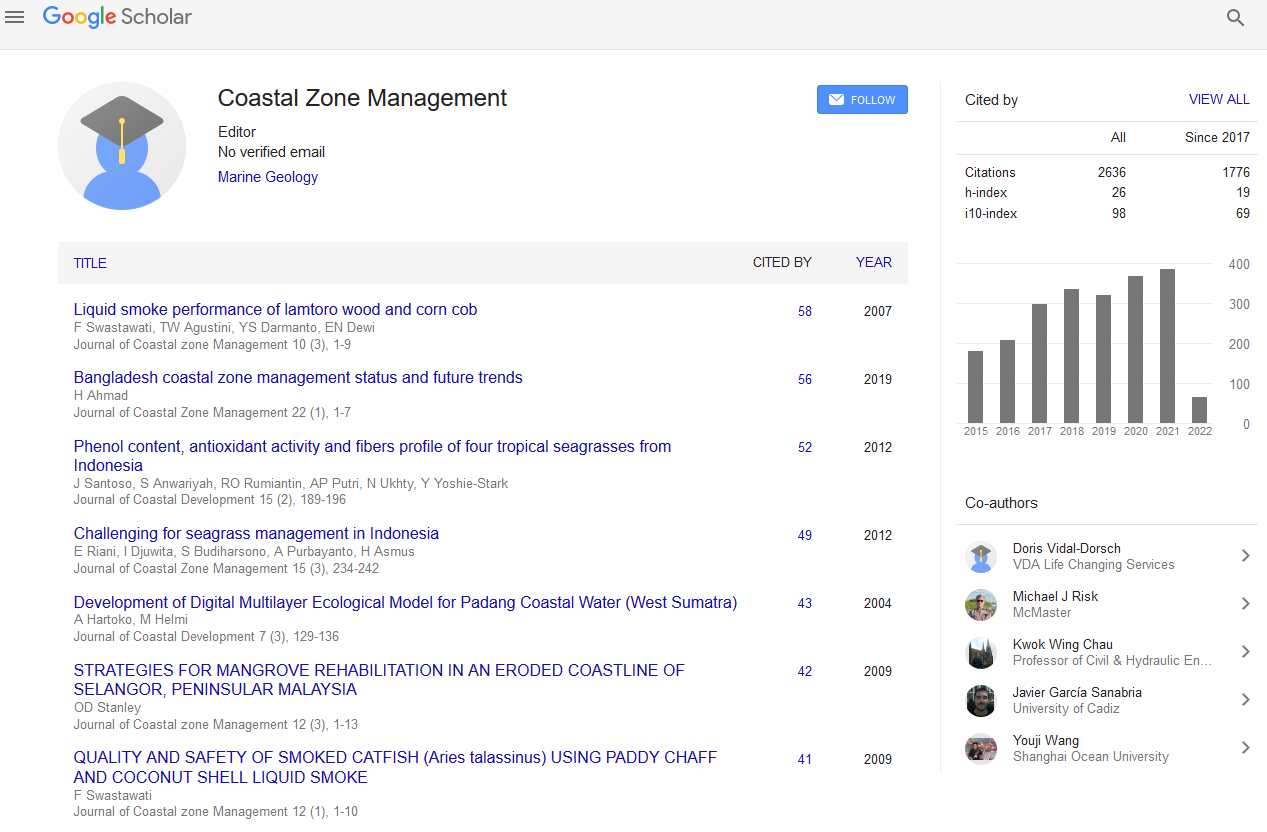Indexed In
- SafetyLit
- RefSeek
- Hamdard University
- EBSCO A-Z
- OCLC- WorldCat
- Publons
Useful Links
Share This Page
Journal Flyer

Open Access Journals
- Agri and Aquaculture
- Biochemistry
- Bioinformatics & Systems Biology
- Business & Management
- Chemistry
- Clinical Sciences
- Engineering
- Food & Nutrition
- General Science
- Genetics & Molecular Biology
- Immunology & Microbiology
- Medical Sciences
- Neuroscience & Psychology
- Nursing & Health Care
- Pharmaceutical Sciences
Abstract
Growth Rates of the Massive Coral Porites lutea Edward And Haime, on the Coast of Bontang, East Kalimantan, Indonesia
Supriharyono
Growth rates (linear skeletal extension) and the timing of skeletal band formation were measured in
eight specimens of the massive coral Porites lutea at three sites (BK1, BK2, and BK3) and three
depths, i.e. 1 m , 3 m, and 5 m in each site. The sites were located in Bontang Kuala Regency, located
about 7.5 km from the fertilizing industry, PT Pupuk Kaltim Tbk, Bontang. Growth rates were measured
by using two techniques, i.e. X-radiograph and UV-light.
Result of the study indicates that the timing of the high density (HD) and low density (LD)
bands is synchronous at the three locations. A one year growth is characterized by three HD bands,
one of which is usually very dense. Illumination of the coral slabs by UV-light revealed a distinct
fluorescent banding pattern on all coral specimens. The data indicate that the fluorescent bands are
usually associated with the high density bands which are accreted during the wet season period. It is
characterized by high land run-off containing elevated concentrations of fulvic and humic acid
compounds, and this apparently occurred almost through out the year. However fluorescent bands were
absent from a number of density couplets, known as “stress bands”. The results suggest that in the
present study the linier skeletal extension rates, based on X-ray radiographic techniques, are a
more accurate measure of P. lutea growth rates then fluorescence banding.
Comparisons of the skeletal extension rates indicate that the growth rates of P. lutea are not
significantly difference (p > 0.05) either between sites or depths. The average of coral growth rates
ranged from 0.8-1.2 cm/year. These are significantly correlated (p < 0.01) with the amount of rainfall.
While the amount of rainfalls is not correlated with urea production of fertilizing industry, P.T.Pupuk
Kaltim Tbk, which some of them are loss as dust (a core for water vapour) during process production.

